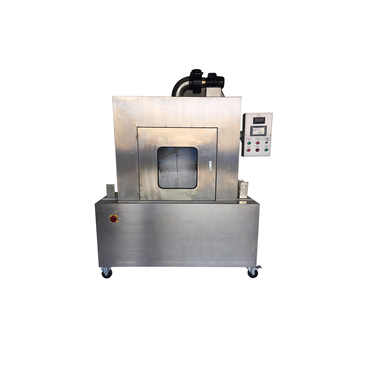Guidelines for IEC 60811 Compliance in Cable Insulation Testing and Exporting
Understanding IEC 60811 An Essential Standard for Wire and Cable Insulation
The International Electrotechnical Commission (IEC) has developed numerous standards that play a pivotal role in ensuring the safety, quality, and performance of electrical components. One such significant standard is IEC 60811, which specifically pertains to the insulation materials used in electrical wires and cables. This standard is critical for manufacturers, exporters, and industries relying on high-quality electrical components.
Background of IEC 60811
IEC 60811 is a standard that outlines test methods for various physical and mechanical properties of insulating materials. Originally published to establish a uniform set of requirements, it has undergone revisions to reflect technological advancements and changes in industry practices. The intent of the IEC 60811 standard is to ensure that the insulating materials used in cables and wires can withstand environmental stresses and mechanical wear while maintaining their insulating properties over time.
Scope of IEC 60811
The scope of IEC 60811 is broad, encompassing several categories of insulating materials, including but not limited to thermoplastic and thermosetting materials. The standard specifies testing procedures for evaluating properties such as tensile strength, elongation at break, aging, heat resistance, and more. By following the protocols set out in IEC 60811, manufacturers can demonstrate compliance with international safety and performance standards, thus assuring users of the reliability of their products.
Importance for Exporters
For exporters of electrical cables and wires, adherence to IEC 60811 is crucial not only for meeting international regulatory requirements but also for gaining a competitive edge in the global market. Many countries require that electrical products meet specific standards to be sold within their borders. By aligning with IEC 60811, exporters can facilitate smoother customs processes and foster trust with international customers.
Additionally, demonstrating compliance with IEC 60811 can significantly improve marketability. Customers, particularly in sectors such as construction, telecommunications, and automotive, often seek products that meet recognized international standards. IEC 60811 compliance can serve as a testament to product quality and safety, thus enhancing brand reputation and consumer confidence.
iec60811 exporter

Key Testing Methods
One of the pivotal aspects of IEC 60811 is its comprehensive testing methods. These methods include
1. Tensile Strength Testing This tests the maximum stress that a material can withstand while being stretched or pulled before breaking. 2. Elongation at Break Testing This measures how much a material can stretch before it breaks, providing insights into its flexibility and resistance to mechanical impacts. 3. Aging Tests Evaluating how insulating materials respond to prolonged exposure to heat, outdoor conditions, and other stressors helps predict longevity and performance in real-world applications.
Understanding these testing protocols is vital for manufacturers to ensure that their products not only meet but exceed market expectations.
Future Implications
As the electrical industry continues to evolve, so too will the requirements set forth in IEC 60811. Ongoing advancements in technology, including the development of new materials and applications, will likely prompt updates to the standard. Manufacturers and exporters must stay informed about these changes to ensure continued compliance and capitalize on emerging opportunities.
Furthermore, the increasing emphasis on sustainability and environmental considerations in manufacturing processes suggests that future iterations of IEC 60811 may include guidelines for eco-friendly materials and recycling considerations. This would represent a significant shift in the industry, fostering the development of sustainable electrical components.
Conclusion
In conclusion, IEC 60811 serves as a cornerstone standard within the electrical industry, ensuring the quality, safety, and performance of cable insulation materials. For exporters, adhering to this standard is not just an obligation but a strategic advantage in the global marketplace. As we move forward, staying abreast of updates to IEC 60811 will be essential for maintaining compliance and fostering innovation in cable manufacturing and insulation technology. By committing to these standards, businesses can ensure they are well-positioned to meet the demands of the current market and contribute to a safer, more reliable electrical infrastructure worldwide.
-
Why the Conductor Resistance Constant Temperature Measurement Machine Redefines Precision
NewsJun.20,2025
-
Reliable Testing Starts Here: Why the High Insulation Resistance Measuring Instrument Is a Must-Have
NewsJun.20,2025
-
Flexible Cable Flexing Test Equipment: The Precision Standard for Cable Durability and Performance Testing
NewsJun.20,2025
-
Digital Measurement Projector: Precision Visualization for Modern Manufacturing
NewsJun.20,2025
-
Computer Control Electronic Tensile Tester: Precision and Power for the Modern Metal Industry
NewsJun.20,2025
-
Cable Spark Tester: Your Ultimate Insulation Assurance for Wire and Cable Testing
NewsJun.20,2025
 Copyright © 2025 Hebei Fangyuan Instrument & Equipment Co.,Ltd. All Rights Reserved. Sitemap | Privacy Policy
Copyright © 2025 Hebei Fangyuan Instrument & Equipment Co.,Ltd. All Rights Reserved. Sitemap | Privacy Policy
